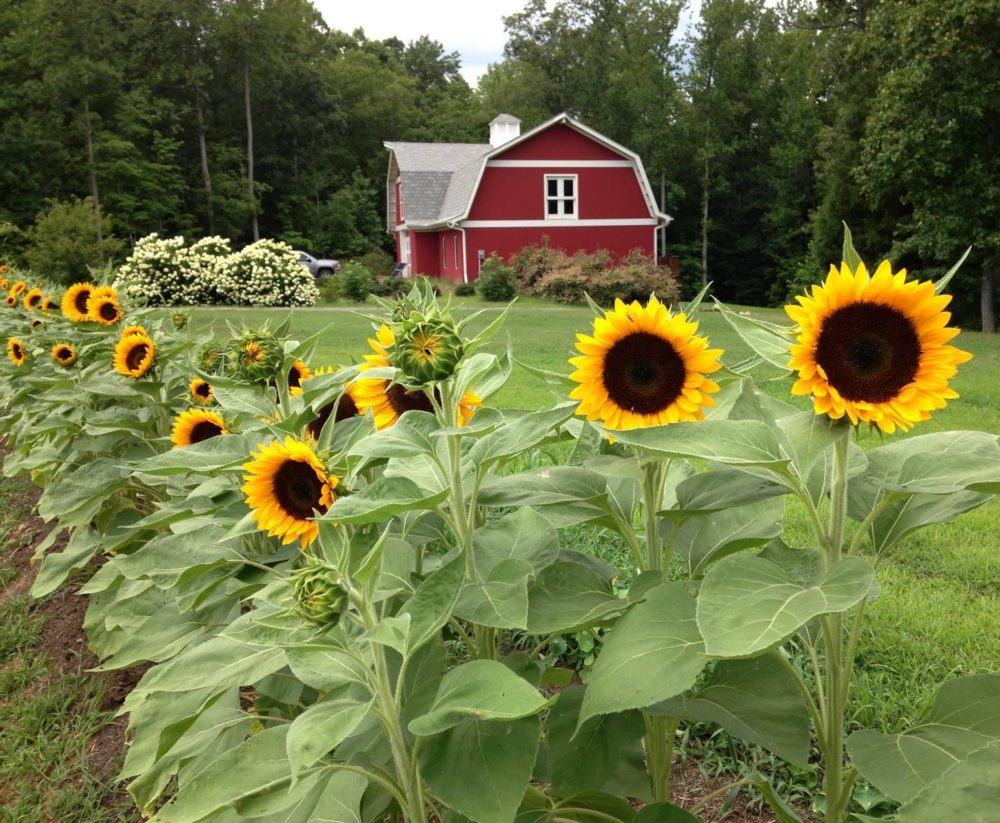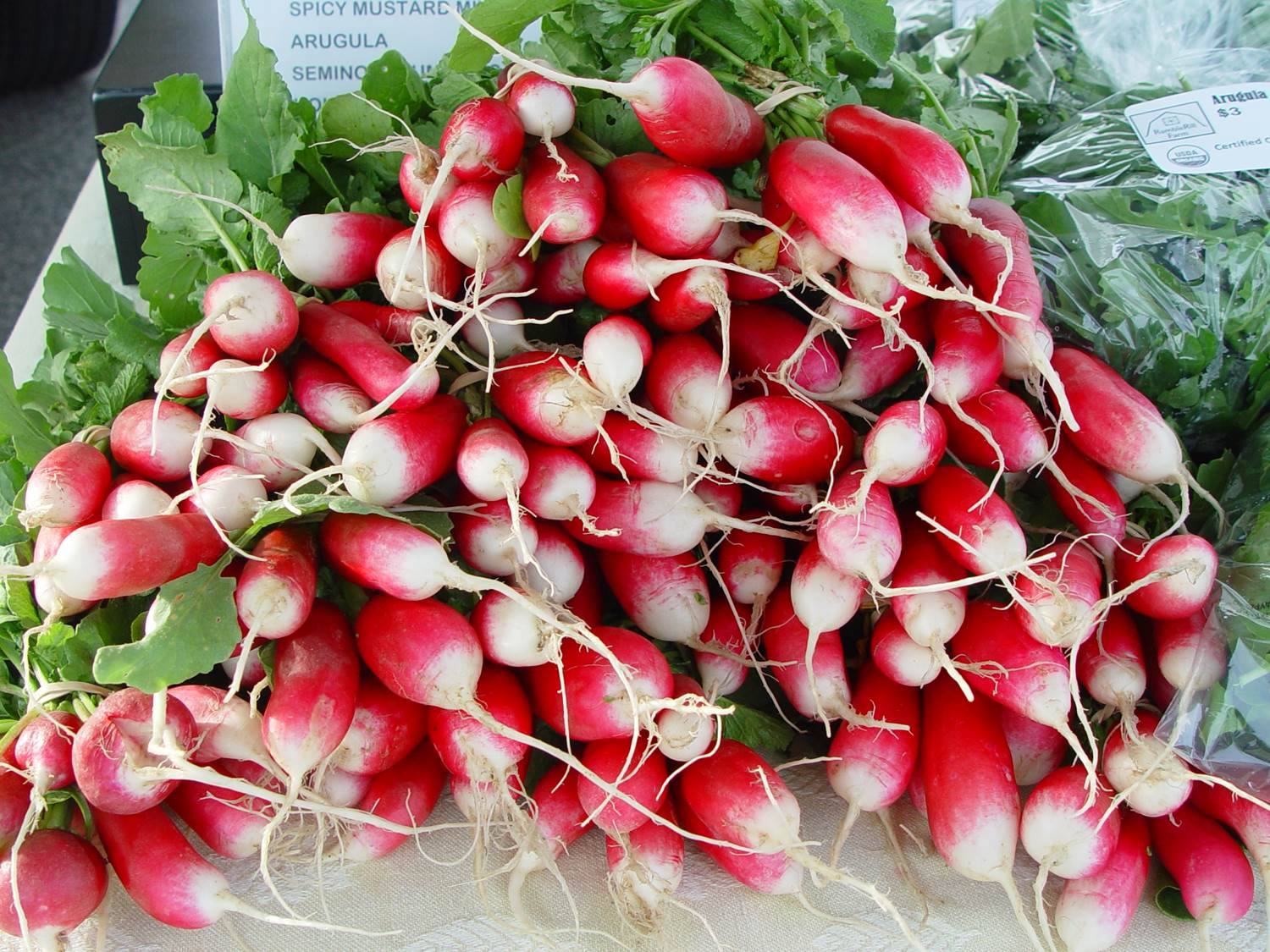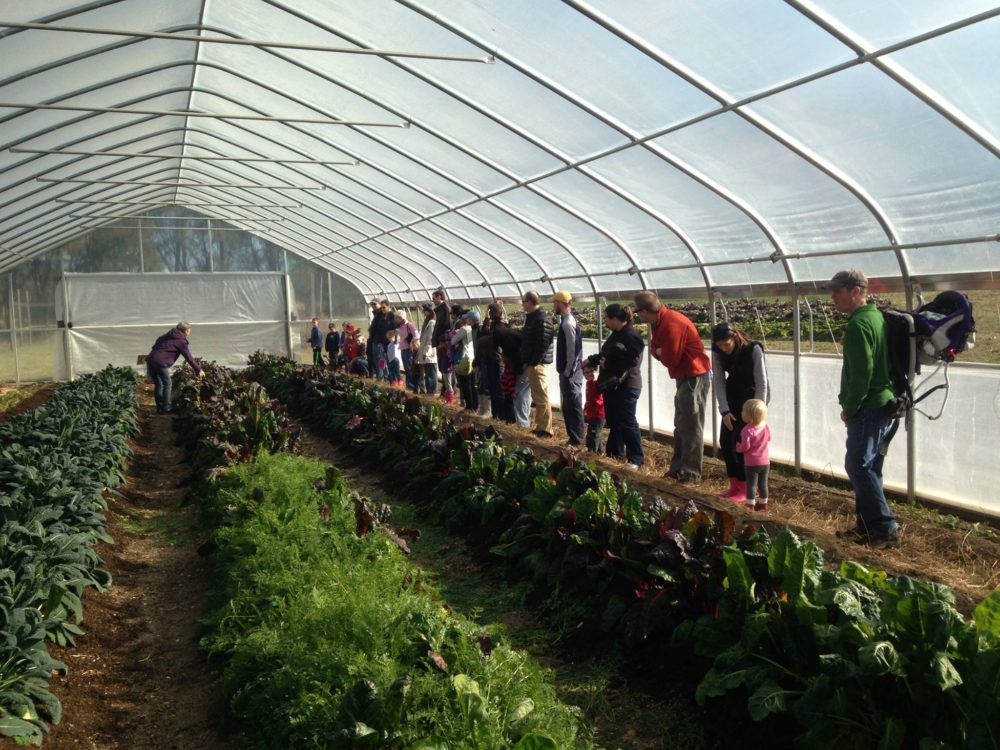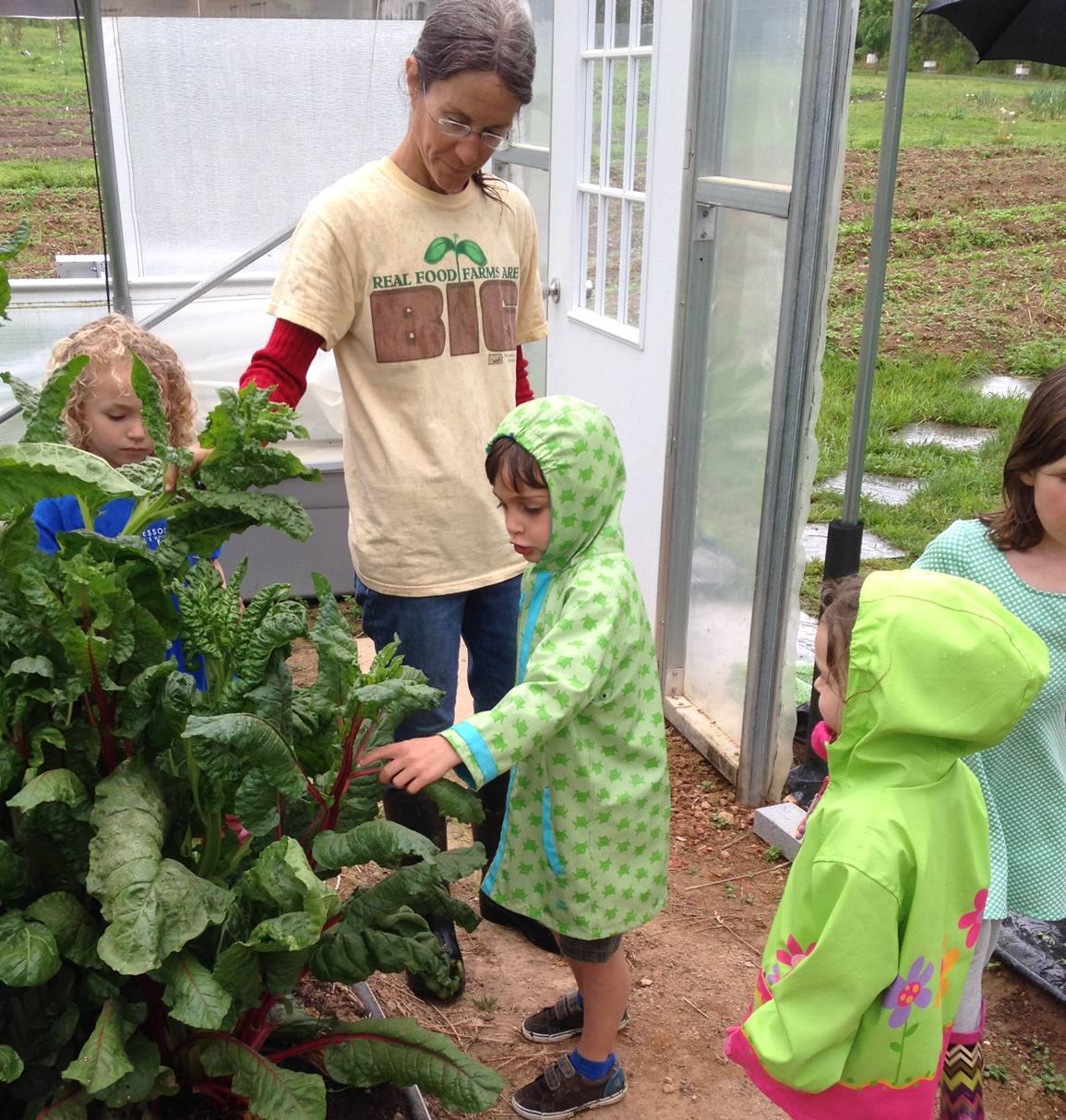by Jane Saiers (“Farmer J”), RambleRill Farm | Sept. 22, 2015 –
CFSA Farm Services offers consulting for farms ready to transition to organic.

In 2010, my husband and I started RambleRill Farm, where we offer educational and wellness programs and grow and sell certified organic fruits, vegetables, and mushrooms. We are proud to grow US Department of Agriculture (USDA) certified organic produce. We ate certified organic foods for years before we started to grow our own food because, like many consumers, we equated “certified organic” with not using synthetic pesticides and fertilizers and, therefore, with safer food for us as eaters.
Upon starting the farm in 2010, my husband and I did not intend to pursue organic certification of our produce. We followed the lead of other farmers who described themselves as “following organic practices but not certified.” The inspirational spark that led our farm to change course and pursue organic certification was a guest lecture by Earthwise Company’s Tony Kleese in a class in the Sustainable Agriculture program at Central Carolina Community College. Having heard Tony speak about the history, purpose, and practices of certified organic growing, I read the National Organic Program standards for certified organic production for the first time. I learned that, yes, being certified organic entails not using synthetic insecticides, herbicides, or fertilizers—but it is much more than that.

The National Organic Program sets forth standards that operationalize a systems approach to farming that supports the health of people and the environment. The standards are documented, accessible to eaters and growers alike, and enforceable. The USDA defines organic agriculture as “a production system that is managed to respond to site-specific conditions by integrating cultural, biological, and mechanical practices that foster cycling of resources, promote ecological balance, and conserve biodiversity.” Organic agriculture is a whole-farm approach that entails striving to work in harmony with natural processes and employing practices healthy for humans, animals, and the environment.
When confronted with a challenge on the farm, the organic grower asks, “What would nature do to solve this problem? How can I work with, rather than against, nature?”
Organic agriculture involves continuously learning how better to attune farming practices to the natural world.
The Process
To become certified, farms prepare an application that includes:
- A one-year prospective Organic System Plan describing practices to be employed and substances to be used to foster cycling of resources, promote ecological balance, and conserve biodiversity
- A detailed farm description including field maps
- Detailed records including soil and water test results, pest and disease monitoring logs, tillage and cultivation logs, planting and harvest records, post-harvest handling and storage reports, field activity records, and product sales records
- A history of substances applied to the land during the past three years
- Lists of products grown and processed and of all inputs to be applied to or near growing spaces with associated sales receipts and labels.

Organic System Plans are updated and farm inspections are conducted annually by a USDA-accredited certifying agent. If the farmer determines that deviations from the Organic System Plan are necessary, the farmer consults with the certifying agent to ensure continued compliance with National Organic Standards.
As we prepared our application to become certified, our farm benefited greatly from farm services programs offered by Carolina Farm Stewardship Association. CFSA Organic Transition Coordinator Eric Soderholm helped us by organizing a transitioning-to-organic workshop that we attended, consulting with us on our application, visiting our farm, and compiling the comprehensive online reference Organic Transition Handbook for Produce Farmers. CFSA Farm Services Coordinator Keith Baldwin prepared for us a conservation plan that outlines farm-specific practices for addressing resource concerns and makes our farm eligible to apply for federal funding for conservation practices.

Organic System Plan
The farm-specific Organic System Plan outlines practices for working in harmony with natural processes in a manner healthy for humans, animals, and the environment. Practices that are described in the Organic System Plan and that are required to be implemented on the farm include:
- Measures to Maintain and Improve Soil Fertility. National Organic Program standards require that farmers maintain and improve soil without using synthetic fertilizers, which can compromise animal and environmental health. On RambleRill Farm, we strive to maintain and improve soil health through practices such as use of cover crops, addition of organic matter with leaf mulch and vegetable-based compost, and erosion-control measures such as contour farming.
- Conservation Measures. National Organic Program standards require that farmers take measures to conserve resources on the farm. On RambleRill Farm, we strive to conserve resources through practices such as drip irrigation for water conservation and contour farming for soil conservation.
- Environmentally Sound Pest-Management Practices. National Organic Program standards require that farmers manage pests––including weeds, insects, and plant diseases––with measures that are safe for the environment. Use of synthetic pesticides is not permitted. On RambleRill Farm, we do not use ANY insecticides, herbicides, or fungicides––either synthetic or organic. We do not use synthetic fertilizers. We manage weeds, insects, and diseases with measures such as hand weeding, creating beneficial insect habitats, rotating crops, applying leaf mulch, and cultural practices such as planting disease-resistant varieties.
- Measures to Preserve and Enhance Biodiversity. National Organic Program standards require that farmers take measures to preserve and enhance biodiversity—that is, the abundance of plant, animal, and fungal species in an ecosystem. On RambleRill Farm, we encourage biodiversity through practices such as planting a wide variety of crops as opposed to monoculture plantings; creating diverse habitats supporting diverse species; and maintaining and creating edges (i.e., interfaces between biological communities such as woodland/grassland, land/water) that support diverse species.
The author and farmer Wendell Berry wrote that “To husband is to use with care, to keep, to save, to make last, to conserve… Husbandry is the name of all practices that sustain life by connecting us conservingly to our places and our world.” At RambleRill Farm, we have striven to be good husbands to our farm since the beginning—even before we became certified organic. Largely because of the detailed recordkeeping and careful planning entailed in developing the implementing the Organic System Plan, becoming certified organic has helped us to practice better husbandry.

Certified Organic as a Baseline
While organic principles are integral to our farming approach, they are not the only ones that guide our work. Organic principles and practices serve as a baseline that we continually seek to exceed in our efforts to become better farmers and people. For example, being certified organic does not necessarily entail supporting local community and local economy. We buy locally and sell locally in an effort to help our community and home place thrive. Further, while many practices involved in being certified organic enhance sustainability, certified organic is not synonymous with sustainable. Economic, social, and environmental sustainability are primary goals for our farm.
Implications for Our Customers
Being certified organic means that we adhere to specific National Organic Standards practices that are documented, accessible, and enforceable.
As a certified organic farm, we have detailed knowledge and documentation of the history, from seed to sale, of each and every fruit, vegetable, and mushroom that we grow.
We have often heard farmers who are not certified organic say that they follow organic practices. Problematically for the customer, definitions of “organic” in this context can vary from farm to farm. We know that the food we grow is produced using practices intended to preserve and improve human, animal, and environmental health. We view it as our responsibility to share information about our growing practices with our customers who want to eat food that is safe and healthy. We view our certified organic status as one means of making our practices transparent to customers and as an invitation to conversation!


